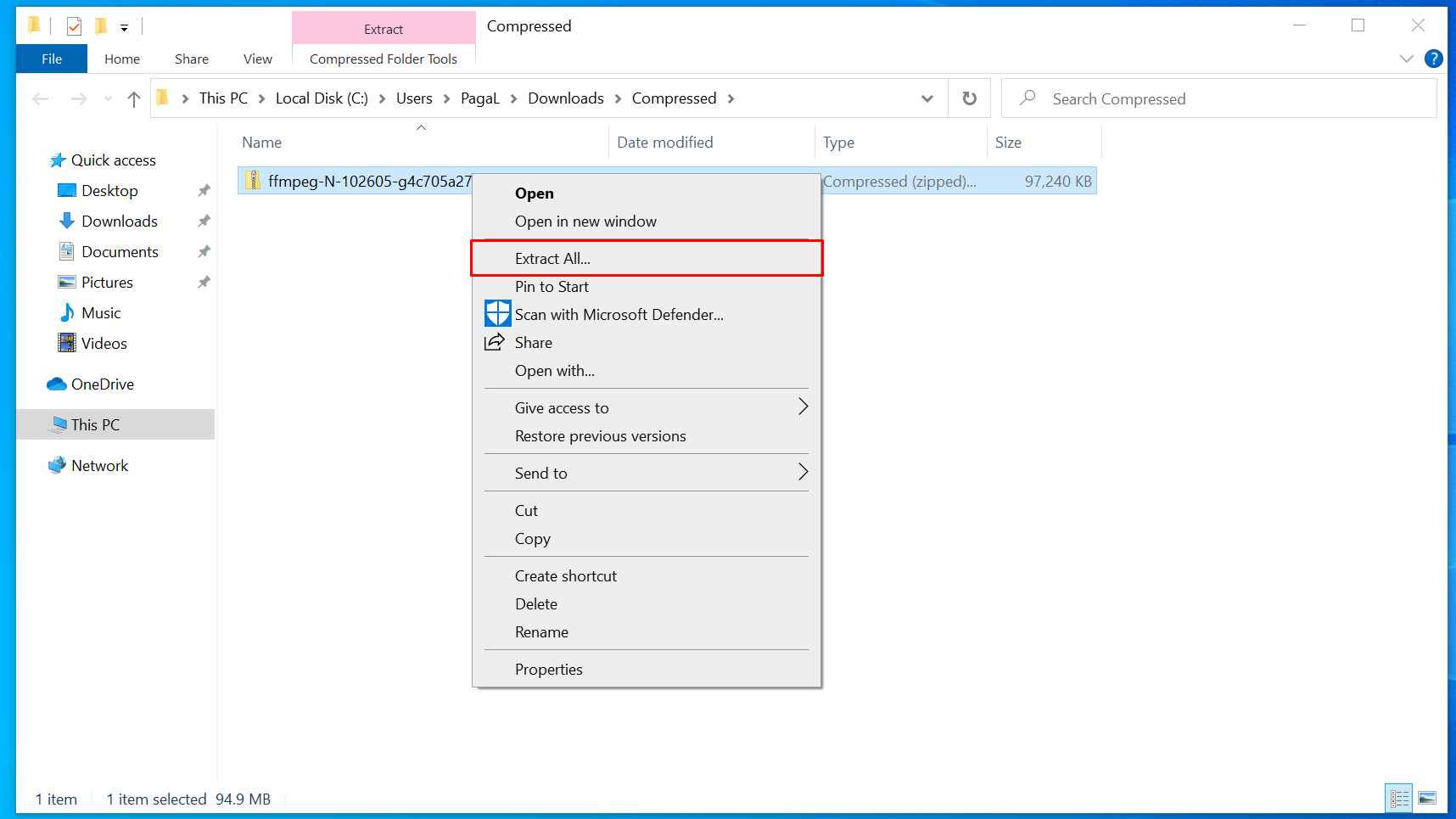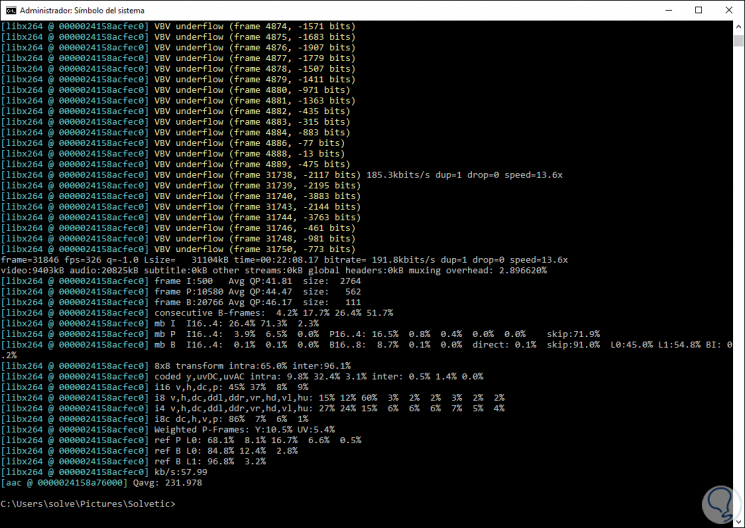
Now you can play around with all sorts of things, like converting an image sequence into a video, a video into an image sequence, rotate and scale videos, discover information about a video, stabilize that shaky video you took at you Great Aunt’s 4th wedding, stream the webcam you planted in your girlfriend’s ex-boyfriend’s bedroom, or convert your 250 frame cube render to a super-crispy lossless h264 of unparalleled awesomeness. If all is well – congratulations, it’s installed! If it still tells you that it doesn’t recognize the command, double check that you successfully added the ffmpeg bin folder to the system path. Once you’ve got a console open, check that FFmpeg is installed properly by typing ffmpeg -codecs, which will show you all the codecs you have access to, including audio and video.

 Shift+Right Click in a folder (without any files selected) and choose Open command window here. Hit Win+R to open the Run utility and type cmd there. Search in the start menu for command prompt or just cmd. WMF allows for H.264 rendering and depending on your use, you may not need to install FFMPEG anymore.Since FFmpeg is a command-line program, we’re going to need to open a command line! The Windows version of REAPER since 6.57 now include support for the Windows Media Foundation (WMF) for video encoding/decoding, which is built into Windows 10 and 11. Verify installation by checking for available decoder information in REAPER Preferences / VideoĪnd by looking in the Render window for Video FFMPEG. dll files and paste to REAPER’s UserPlugins Folder Right-click on the ffmpeg-release-full-shared.7z file and choose ‘extract here’Ĭopy the. Get 7-Zip to extract the 7z compressed folder. Get FFMPEG 4.4 here ( full-shared) *updated link* VLC decoder for playing back video in REAPER (64-bit) NOTE – 2 weeks after this video FFMPEG 5.0 came out.
Shift+Right Click in a folder (without any files selected) and choose Open command window here. Hit Win+R to open the Run utility and type cmd there. Search in the start menu for command prompt or just cmd. WMF allows for H.264 rendering and depending on your use, you may not need to install FFMPEG anymore.Since FFmpeg is a command-line program, we’re going to need to open a command line! The Windows version of REAPER since 6.57 now include support for the Windows Media Foundation (WMF) for video encoding/decoding, which is built into Windows 10 and 11. Verify installation by checking for available decoder information in REAPER Preferences / VideoĪnd by looking in the Render window for Video FFMPEG. dll files and paste to REAPER’s UserPlugins Folder Right-click on the ffmpeg-release-full-shared.7z file and choose ‘extract here’Ĭopy the. Get 7-Zip to extract the 7z compressed folder. Get FFMPEG 4.4 here ( full-shared) *updated link* VLC decoder for playing back video in REAPER (64-bit) NOTE – 2 weeks after this video FFMPEG 5.0 came out.






 0 kommentar(er)
0 kommentar(er)
